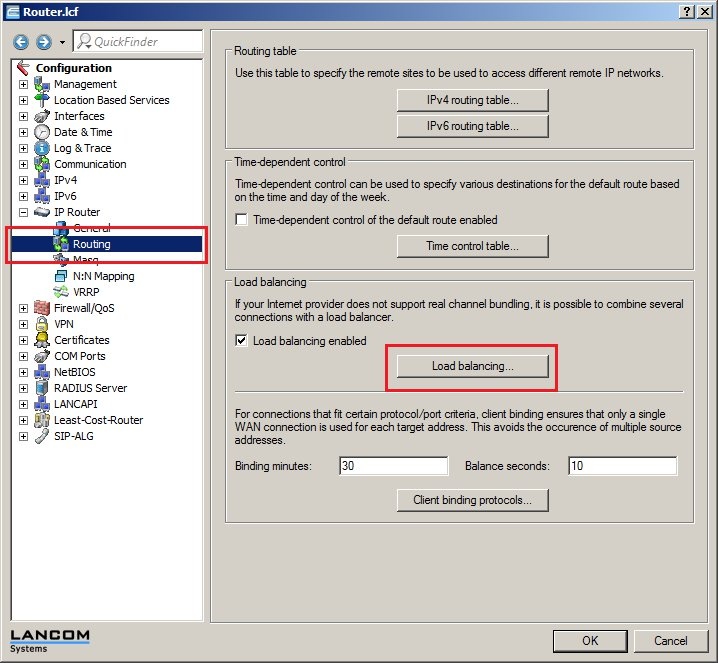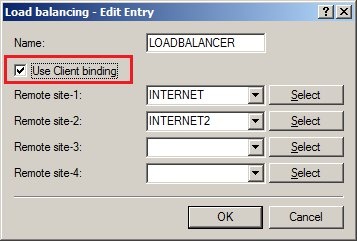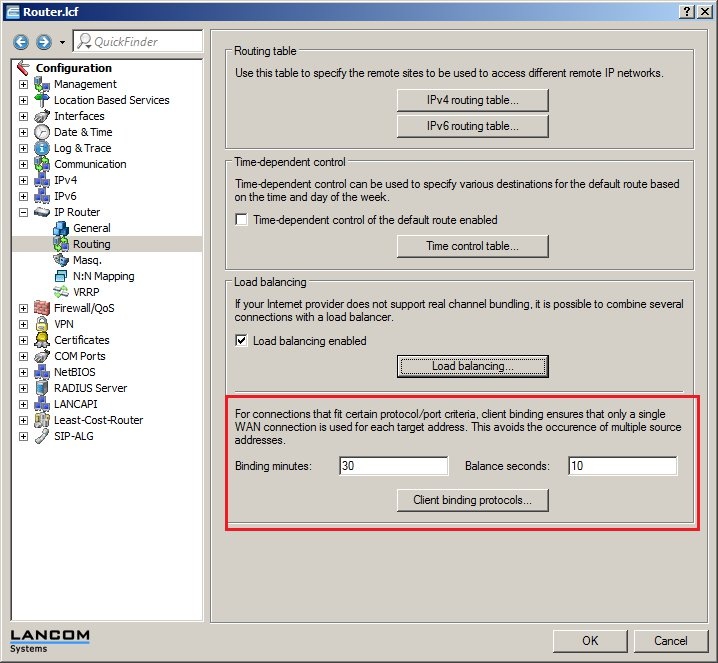In order to prevent data from flowing via this main-session Internet connection when it could easily be transferred via parallel connections, a timer ensures that the load balancer distributes additional sessions between the available Internet connections for a specified period. After the timer expires, the client binding forces a new session over the original Internet connection and the timer is restarted. The server thus continues to recognize the login status for the user due to the current IP address. Client binding is protocol-oriented. In the dialog Client-binding protocols you specify which protocols are used with client binding. Preset values are the protocols HTTP and HTTPS. |  ).
).


 ).
).

